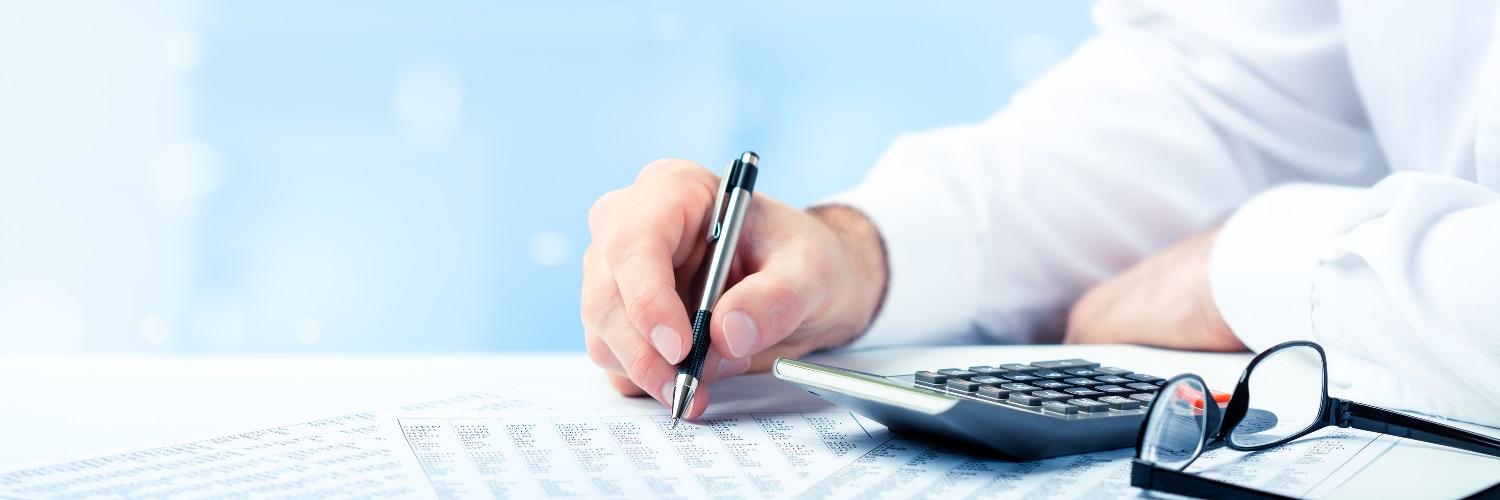MENU
Starting a Business
- Best Small Business Loans
- Best Business Internet Service
- Best Online Payroll Service
- Best Business Phone Systems
Our Top Picks
- OnPay Payroll Review
- ADP Payroll Review
- Ooma Office Review
- RingCentral Review
Our In-Depth Reviews
Finance
- Best Accounting Software
- Best Merchant Services Providers
- Best Credit Card Processors
- Best Mobile Credit Card Processors
Our Top Picks
- Clover Review
- Merchant One Review
- QuickBooks Online Review
- Xero Accounting Review
Our In-Depth Reviews
- Accounting
- Finances
- Financial Solutions
- Funding
Explore More
Human Resources
- Best Human Resources Outsourcing Services
- Best Time and Attendance Software
- Best PEO Services
- Best Business Employee Retirement Plans
Our Top Picks
- Bambee Review
- Rippling HR Software Review
- TriNet Review
- Gusto Payroll Review
Our In-Depth Reviews
- Employees
- HR Solutions
- Hiring
- Managing
Explore More
Marketing and Sales
- Best Text Message Marketing Services
- Best CRM Software
- Best Email Marketing Services
- Best Website Builders
Our Top Picks
- Textedly Review
- Salesforce Review
- EZ Texting Review
- Textline Review
Our In-Depth Reviews
Technology
- Best GPS Fleet Management Software
- Best POS Systems
- Best Employee Monitoring Software
- Best Document Management Software
Our Top Picks
- Verizon Connect Fleet GPS Review
- Zoom Review
- Samsara Review
- Zoho CRM Review
Our In-Depth Reviews
Business Basics
- 4 Simple Steps to Valuing Your Small Business
- How to Write a Business Growth Plan
- 12 Business Skills You Need to Master
- How to Start a One-Person Business
Our Top Picks
Small Business Guide to a Restaurant Management System

Table of Contents
A restaurant management system (RMS) is an essential tool for any new restaurant. These systems are designed to keep your restaurant running by tracking employees, inventory and sales. A typical RMS setup usually includes both software and hardware, such as a cash register, barcode scanner and receipt printer, depending on how your restaurant is organized. Most importantly, an RMS is a comprehensive tool that allows you to see your restaurant and its needs at a glance, which can simplify your workload on a day-to-day basis.
Many restaurant management systems are designed to integrate easily with other software applications, which allows you to customize a system that works well for your business. Here’s everything you need to know about choosing your restaurant management system.
Editor’s note: Looking for a POS system for your business? Fill out the below questionnaire to have our vendor partners contact you about your needs.
What is a restaurant management system?
A restaurant management system is a type of point-of-sale (POS) software specifically designed for restaurants, bars, food trucks and others in the foodservice industry. Unlike a POS system, RMS encompasses all back-end needs, such as inventory and staff management. These systems also handle payment processing, order management and other tasks staff would typically perform.
Restaurant management systems streamline operations to allow staff to focus on more important tasks, such as providing excellent customer service, and gives managers time to focus on overseeing their restaurants more efficiently.
What is the difference between an RMS and a standard POS system?
While both systems are classified as POS, an RMS offers features unique to the foodservice industry like ingredient-level inventory updates, the ability for waitstaff to send orders directly from the table to the kitchen, split billing and kitchen displays.
What are the benefits of an RMS?
An RMS offers more features than a standard POS system. Restaurants can perform these tasks with an RMS:
- Track sales and orders
- View accurate, real-time financial statements
- Manage staff scheduling
- Access data through the cloud
- Utilize a built-in customer relationship management (CRM) tool to build mailing lists or start a rewards program
What types of RMS are available?
Because every restaurant has unique needs, there are different RMS types from which to choose. To determine which type best suits your restaurant or bar, think of the features your restaurant could use and how important each of those features is to you.
1. End to end
This is the most robust and comprehensive type of RMS. The main features include core POS, inventory control, CRM, staff, menu, order and payment management, technical support and reporting and analytics. Depending on the RMS vendor, you may be able to mix and match features.
2. POS
The POS is the core of the system and allows you to integrate it with third-party systems for inventory, accounting, marketing and other key functions. [Read related article: The Best POS Systems of 2024]
3. iPad or Android only
Most systems are designed to run only on one device type to maintain the integrity of the system. Determine which operating system you will use in your restaurant before choosing a system.
4. General POS
This system is designed for businesses that have both retail and foodservices available. It offers seamless crossover with add-on modules.
The best restaurant POS systems help you take orders, accept payments and manage tables, staff, menus and inventory. Check out some of the top providers from TouchBistro and Revel Systems to Linga POS and Upserve POS.
What can I manage with an RMS?
You can manage almost every pertinent aspect of your restaurant, depending on which type of RMS you choose. With an end-to-end system, you will have complete access to these functions and features:
- Employee schedules, including daily, vacation and sick time
- Payroll
- Financial statements
- Inventory
- Accounting
- Reporting and analytics
- Core POS
- CRM
- Menu
- Reservations
What should I consider before getting an RMS?
Because this system will be responsible for many of your day-to-day processes, it’s important to find one that works well for you and gives you exactly what your restaurant needs. Start by determining a clear purpose you need the system to serve and a list of necessary features. Next, give serious consideration to the following aspects.
Type
Determine what type of system you need. If you’re going to be running your business on Android devices, do not get an iPad system. If you want a one-stop shop, an end-to-end system will likely be the most cost-effective option.
Scaling
If you have plans to grow or franchise your restaurant, buy a system that can grow with it. Make sure your system can handle an increase in the number of terminals and handheld devices, provides advanced large-scale analytics, offers multibranch add-ons and can handle a large number of employees (and their schedules).
Integration
No system is perfect, so you will most likely have to integrate your RMS with other software apps to achieve everything you need. You should make sure your RMS integrates easily with other systems, such as OpenTable or Yelp for reservations, so you don’t waste time repetitively entering data into separate programs.
Ease of use
Running a restaurant is tough as it is. You don’t want to waste time troubleshooting your RMS in the middle of a dinner rush. Spend a good deal of time testing the RMS out, ensuring that it is intuitive and problems are easy to fix.
Restaurant management system pricing
The price of your restaurant management system will depend on how complex it is as well as how many locations you’ll be managing with it.
A basic RMS that manages your restaurant’s accounting and sales needs typically costs around $150 per year. For a more complex RMS suite that tracks all of your business’s needs across multiple locations, you could pay thousands of dollars per month. Additional integrated hardware, such as registers or tablets, will also increase your upfront costs.
Your payment schedule will also depend on whether your RMS software offers perpetual or subscription licensing. Perpetual licensing requires you to pay a large sum upfront to own the license indefinitely; while your monthly or yearly costs will be lower, your initial investment will be much higher. In contrast, subscription licensing requires a smaller monthly or annual fee; while upfront payments are lower, you’ll pay more in recurring fees.
Over time, both perpetual and subscription pricing options typically even out. Discuss vendors’ pricing structures with them, keeping in mind your bar or restaurant’s budget and needs.
Features to look for in restaurant management systems
When determining which restaurant management system to use, look for these five useful features.
1. Sales and tax tracking
Your RMS should track all sales data, such as your top menu items, busiest selling times, best-performing team members and profits, to help you make important business decisions. Your software should also provide detailed records for tax reporting purposes.
>> Learn More: How to Increase Your Restaurant’s Profits
2. Order management
Your restaurant staff should be able to manage tables, reservations, checks and menu items easily through your RMS. You and your managers should also be able to control refunds, voids and comps and view order statuses. If you operate a bar, your RMS should allow you to preauthorize credit cards to open tabs.
Order management provides a seamless experience for both customers and staff, eliminating the risk of human error and ensuring all information is in one place.
3. Inventory management
Knowing exactly how much product you have on hand will help you determine when and how much to reorder from your vendors. Some RMS software offers inventory management options, while others may require integration with third-party software to help you with this.
4. Reporting and customer data
If your chosen RMS tracks and filters your sales and customer data, you’ll have access to a wealth of information to help you grow your business and make better marketing decisions. Understanding your customers will help you better target them through advertising and personalizing their dining experiences. For instance, you can send gift cards or credits for free meals on their birthdays or other anniversaries.
5. Marketing, gift cards and reward programs
Consider a system that offers marketing tools, such as promotions and loyalty or rewards programs. Your RMS may have native marketing tools or require third-party software integration for this. If you’re interested in offering gift cards for your restaurant, make sure your RMS can help you manage that as well.
A good restaurant management system makes all the difference in how well your restaurant runs. While there are many factors to consider, it is worth taking the time to determine exactly how the system must serve your business and what you want to gain from it. When you have a clear goal in mind and a list of nonnegotiable features, you’re well on your way to getting up and running with a restaurant management system.
Sean Peek contributed to this article.













